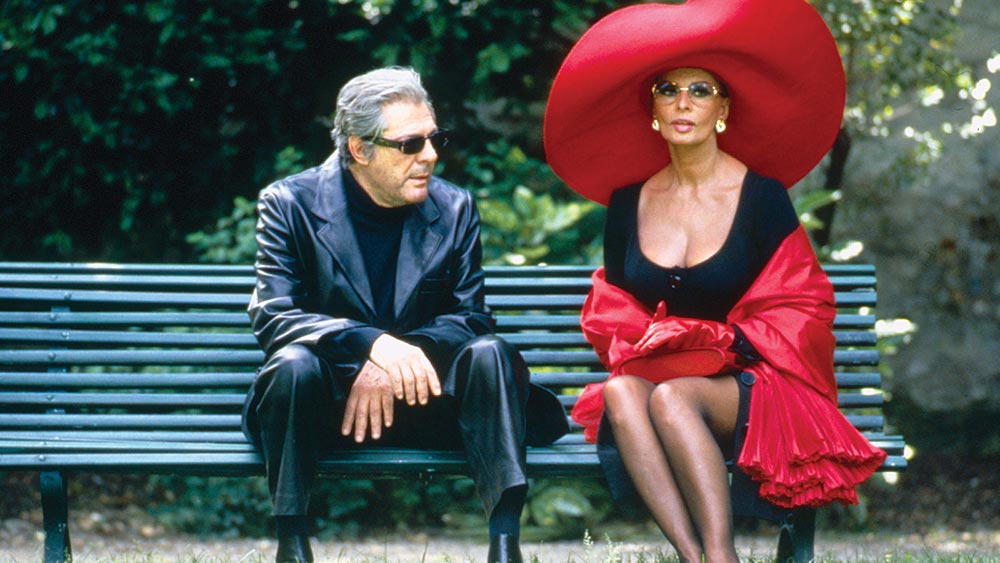Ready to Wear (Prêt-à-Porter) has few defenders. Despised by critics upon release, it all but killed Robert Altman’s early ‘90s comeback, when the one-two punch of The Player (1992) and Short Cuts (1993) delivered him from a desperate, though plenty intriguing, spell in Hollywood’s doghouse during the Reagan years. Though that era was deeply painful for a hedonist accustomed to good times on the studio dime, it’s not hard to imagine Letterboxd cinephiles, or even a generation of film geeks not yet born, preferring Altman’s ‘80s output of shaggy adaptations of obscure plays to the hallowed iconoclasm of his ‘70s pageant films. Generational contrarianism is ravenous for minor works and fallow periods to reappraise, with usually productive results. Fresh eyes in the coming years might also be kinder to Ready, even if no one involved with the film has anything good to say about the finished product.
The short chapter dedicated to Ready in Mitchell Zuckoff’s oral history of Altman’s career mostly concerns the stroke the director suffered shortly before filming. He reportedly hated the script that Miramax had greenlit for him, but was confident that he’d “make it up as we went along,” as he’d done a dozen times before. The film does indeed feel cooked up mid-stride, and that offended anyone looking for a repeat of the symphonic grandeur of Short Cuts. There’s little justification for considering Ready alongside McCabe and Mrs. Miller (1971) or California Split (1974), but like those unassailable masterpieces, it offers a cast of irrepressible charmers feasting on each wry setup until the marrow’s all but gone. The perfectly balanced Altman cocktail of chortling warmth and smug misanthropy is delightfully present in every scene. Any one of these ten or so entwined subplots has enough juice to power its own feature. Demanding more is pure greed.
As their forebears did in Nashville for the bicentennial, the film’s cast descends on Paris in the opening minutes to attend fashion week. They start colliding immediately at Orly thanks to lost luggage, overbooked hotels, media assignments, business mergers, and, in one delirious case, spycraft. In Nashville, country music—undiluted Americana simultaneously at its finest and most ridiculous—acted as a bulwark of sincerity against the presiding smirk. Though Altman clearly holds some appreciation for the innovative flair of international fashion houses, the milieu is too elitist, too maximal and inherently savage, to serve as a stable foundation for pathos. The engine runs on mass media spectacle, a hype machine in which billions of dollars are generated from the sparks that fly between designers, models, and reporters. One of the film’s best gags has the wealthy and the beautiful constantly stepping in dog shit, a pesky reminder that the rare air of toy dogs and flanged headwear produces an acid rain of excreta.
To the extent he can, Altman looks for human foibles slowing the big ugly machine by getting granular. He channel surfs through his vignettes, causing whiplash that smarts until the next lightning-in-a-jar line reading or facial expression. In a movie featuring Julia Roberts and Sophia Loren, nothing feels as thrilling as Linda Hunt on her knees raging at Stephen Rea’s cynical photographer. Roberts and Loren whip up plenty of their own frisson, but Hunt’s impotent rage, which lasts all of 20 seconds, is so novel and fully inhabited that it transcends the silly plot mechanic that generated it and lingers in one’s head like a Top 40 key-change. Altman may or may not have loved people, but it’s certain that he loved actors. And through this mediated affection, he amplified the neglected banality that the world, especially its towering institutions, is made of human beings.
Ready to Wear screens this afternoon, June 10, at Film at Lincoln Center on 35mm as part of the series “Sophia Loren: La Signora di Napoli.”



